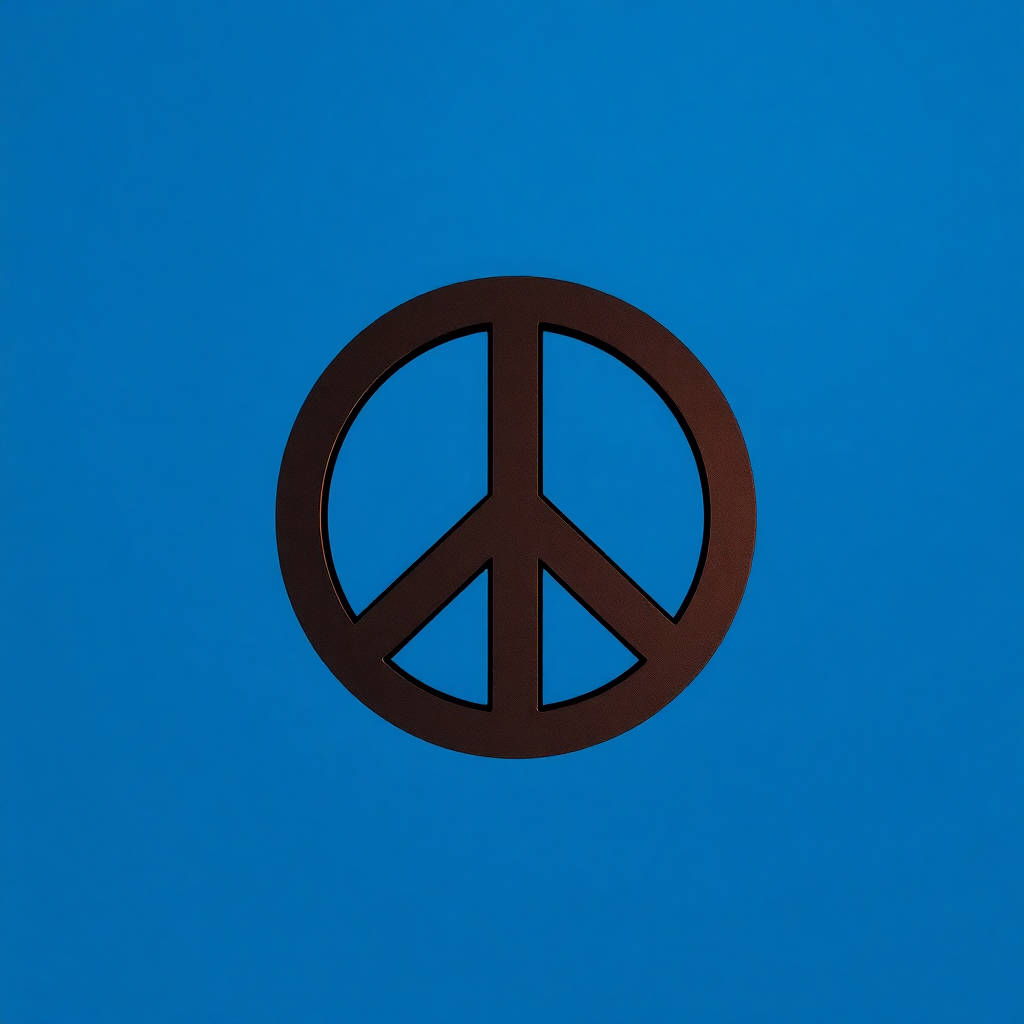The Peace Symbol: History, Meaning, and Cultural Impact
Today, more than six decades after its creation, the peace symbol remains as relevant as ever. It continues to appear at protests, rallies, and demonstrations worldwide, carried by new generations of activists who may not know its specific origins but understand its universal message.
The peace symbol, instantly recognizable with its distinctive circle containing a vertical line bisected by two diagonal lines forming an inverted "Y," has become one of the most powerful and enduring icons of the modern era. What began as a specific design for a British anti-nuclear movement has evolved into a universal symbol of hope, resistance, and the human desire for harmony. Its simple yet profound design has transcended cultural, political, and generational boundaries, making it one of the most widely recognized symbols in the world today.
The Birth of an Icon
The peace symbol was created in 1958 by British graphic designer Gerald Holtom for the Campaign for Nuclear Disarmament (CND). Holtom was commissioned to design a symbol for the first Aldermaston March, a protest walk from London to the Atomic Weapons Research Establishment in Aldermaston, Berkshire. The designer drew inspiration from the semaphore alphabet, where flag positions represent different letters. The symbol combines the semaphore positions for the letters "N" and "D," standing for "Nuclear Disarmament."
Holtom later revealed that the design also held personal meaning for him, representing his own despair over the nuclear arms race. He described the symbol as depicting a human figure with arms stretched downward in despair, enclosed within a circle representing the world. This dual interpretation – both as a technical semaphore combination and as an emotional representation of human anguish – gave the symbol its profound resonance and helped explain its immediate impact on those who encountered it.

From Nuclear Disarmament to Universal Peace
While the peace symbol originated in the British nuclear disarmament movement, it quickly transcended its original purpose and geographical boundaries. By the 1960s, the symbol had been adopted by the American civil rights movement and anti-Vietnam War protesters, becoming synonymous with broader concepts of peace, love, and social justice. The symbol's migration to the United States marked a crucial turning point in its evolution from a specific political emblem to a universal icon of peace.
The counterculture movement of the 1960s embraced the peace symbol as a central element of their visual language. It appeared on everything from protest signs and bumper stickers to jewelry and clothing, becoming deeply embedded in the aesthetic of the era. Musicians, artists, and activists incorporated the symbol into their work, further cementing its association with progressive social movements and the quest for a more peaceful world.
Design and Visual Impact
The power of the peace symbol lies partly in its elegant simplicity. The clean lines and geometric precision make it easy to reproduce across various media, from large banners to small buttons. The circular boundary suggests completeness and unity, while the internal lines create a sense of balance and symmetry. This visual harmony reinforces the symbol's message of peace and reconciliation.
The symbol's versatility has also contributed to its enduring popularity. It works equally well in black and white or in color, can be scaled to any size without losing its impact, and adapts well to different artistic styles and interpretations. Artists and designers have created countless variations while maintaining the core recognizable elements, allowing the symbol to remain fresh and relevant across different eras and contexts.
Global Adoption and Cultural Variations
As the peace symbol spread globally, different cultures and movements adapted it to their own contexts while preserving its essential meaning. In some regions, the symbol became associated with environmental movements, human rights campaigns, and efforts to promote international cooperation. Various political and social movements worldwide have incorporated the peace symbol into their iconography, demonstrating its universal appeal and adaptability.
The symbol has also found its way into commercial and popular culture, appearing on fashion items, home décor, and consumer goods. While some critics argue that this commercialization has diluted its political potency, others contend that widespread adoption has only increased its visibility and reinforced its message of peace in everyday life.
Contemporary Relevance and Legacy
Today, more than six decades after its creation, the peace symbol remains as relevant as ever. It continues to appear at protests, rallies, and demonstrations worldwide, carried by new generations of activists who may not know its specific origins but understand its universal message. The symbol has proven remarkably durable, surviving changes in political climates, artistic trends, and communication technologies.
In our digital age, the peace symbol has found new life on social media platforms, in emoji keyboards, and in online activism. Its ability to convey complex ideas about peace, justice, and human dignity in a single, simple image makes it perfectly suited for contemporary forms of communication. The enduring power of Gerald Holtom's 1958 design demonstrates how effective visual communication can transcend its original context to become a lasting part of human cultural expression.